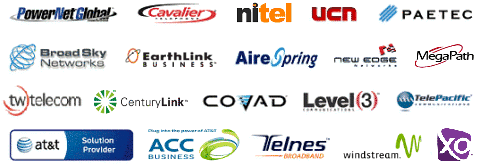About T1 Lines
A T1 line is a very specific kind of copper line that is used in commercial office buildings along with fiber optic phone lines. While many people in small businesses are trying out DSL, you can still find a demand for T1 lines on account of the quality of service that big corporations must have. When phone service was originally introduced, nearly all the wires utilized were copper wires. In most cases, phone lines now utilize fiber to transmit data. The latest fiber optics products work tremendously well. Sound quality is great so customers are able to have telephone conversations without disconnects. Every time you use a fiber optic line instead of a dial up connection for your internet, you should not have any serious issues with connecting so long as there aren't many individuals attempting to hook-up through that very same line.
The reason that T1 lines can be so sought after is likely due to the fact that the majority of businesses most certainly will have a lot of people linked with the web simultaneously owing to the fact that the internet is such an essential part of doing business in today's technology influenced office. Copper has grown to be more expensive in the past several years, therefore T1 lines continue to be prohibitively expensive for use in the home. They are actually primarily cost efficient if you get or deliver a considerable amount of files rapidly on a regular basis. Not surprisingly, they transmit a lot of data at a rate that can't be anywhere the same as DSL. This is what makes them so ideal for large firms that do a great deal of data transmission.
If you find yourself getting a T1 line, you should see the difference right away. Although copper is in such high demand and there seems to be a scarcity, there are plenty of individuals happy to spend a bit extra to get a cheap T1 line for their business in Lafayette. It is especially true when your service is telecommunications.
For working in telecommunications, transmission speed is a major importance for internet connections. Connecting with a transfer rate that is even the slightest bit too slow often means that you will lose out on jobs and earnings. Acquiring a reliable T1 line is a vital step for your business since it will get the information flow that you need using multiple computers a lot quicker compared to other connection types.
We broker Lafayette Fractional T1 Line. This page is a quick list of the services specifically offered by T1Market in Lafayette.
Going forward, our objective is to continually improve our product offerings. We now deliver enterprise items typically used by bigger firms, specifically: fiber ethernet, MPLS network service, OC3, and cloud computing bandwidth delivered over a fiber optic backbone. Several of our carriers even offer free managed Cisco routers for multi-year contracts. Mainly, our goal is to create a bond with you - our client - that will last for years to come. Earning your trust is exactly what we do here. Saving you cash on inexpensive bandwidth services is exactly how we keep it.


